NVIDIA GeForce GTX 670 Review Feat. EVGA: Bringing GK104 Down To $400
by Ryan Smith on May 10, 2012 9:00 AM ESTSynthetics
We’ll also take a quick look at synthetic performance to see if NVIDIA’s choice of clockspeeds and disabling a SMX had any kind of other impact we haven’t anticipated. We’ll start with 3DMark Vantage’s Pixel Fill test.
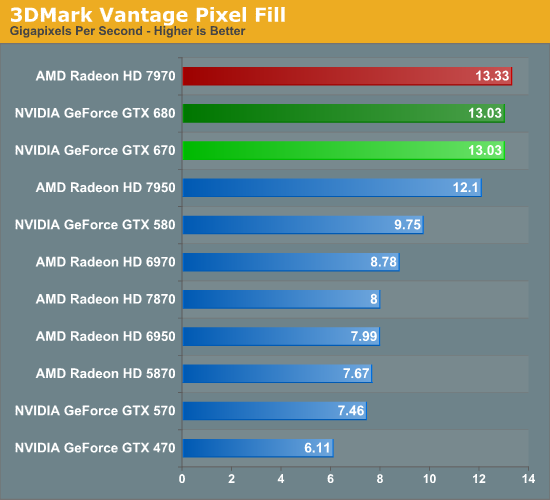
Pixel Fill is said to be memory bandwidth limited, and for good reason. Even with the lower clockspeed of the GTX 670, the fact that it has memory bandwidth equal to the GTX 680 means that it achieves equal performance in this test, confirming that GTX 670 can utilize its memory bandwidth just as well as GTX 680 can.
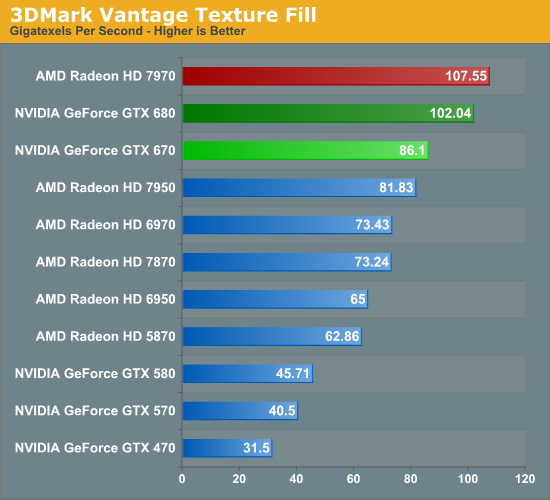
Our second test is 3DMark’s Texel Fill test, which as expected shows a moderate gap between the GTX 670 and GTX 680. Thanks to the loss of an SMX and the lower clocksped the GTX 670 only achieves 85% of the performance of the GTX 680, which thanks to the GTX 670’s more aggressive boost clock is a bit better than what we’d expect from the specifications.
Our third theoretical test is the set of settings we use with Microsoft’s Detail Tessellation sample program out of the DX11 SDK
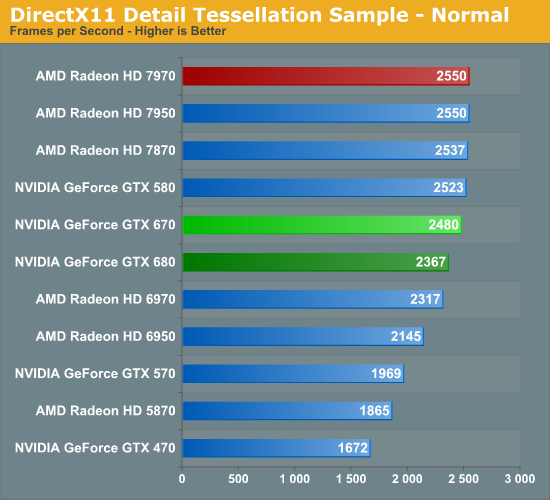
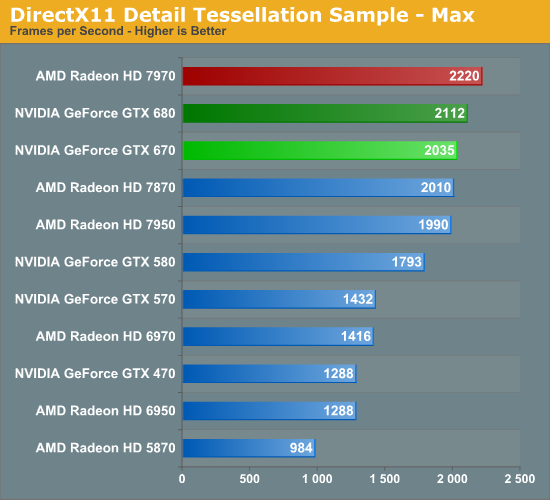
As expected GTX 670 falls behind GTX 680, but again not by nearly as much as we’d expect. The loss of the SMX means GTX 670 lost a Polymorph Engine, but with only a 4% gap with maximum tessellation you’d never be able to tell.
Our final theoretical test is Unigine Heaven 2.5, a benchmark that straddles the line between a synthetic benchmark and a real-world benchmark as the engine is licensed but no notable DX11 games have been produced using it yet.
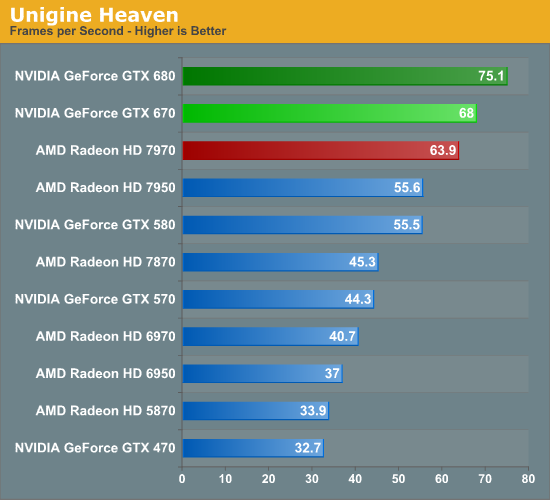
With Heaven the gap between the GTX 680 and GTX 670 once again opens up similarly to what we saw in our compute benchmarks with SmallLuxGPU. This means the GTX 670 falls behind by about 10%, reflecting the shader-heavy nature of this benchmark.










414 Comments
View All Comments
Blackchild1101 - Thursday, May 10, 2012 - link
I'll take two please!Ryan Smith - Thursday, May 10, 2012 - link
You'll get nothing and like it!(Sorry, was watching Caddyshack last weekend)
Wreckage - Thursday, May 10, 2012 - link
To think a few months ago you could have gotten a pair of 7970s for $1100.I'm betting there are a lot of sad AMD fans out there. Their viral marketing group in the forums is going to have a rough year for sure.
retrospooty - Thursday, May 10, 2012 - link
I doubt anyone that places happiness in their preferred companies products being #1 is all too happy to begin with ;)RampantAndroid - Tuesday, May 15, 2012 - link
Sure, but realizing that waiting a few months could have saved them serious $$$.Same probably goes for GTX680 owners.
CeriseCogburn - Monday, May 28, 2012 - link
The partners of nVidia are going to be happy, because what comes out of the 680 and 670 is an auto overclock and an overclockable card, with locks on power increases, and therefore far, far less chance of anything burning out.Overclock to your hearts desire - you won't be burning these up while the amd cards will still be a housefire and cost the partners plenty to replace.
nVidia's partners are very, very happy.
JlHADJOE - Saturday, July 21, 2012 - link
They would if they have stocks invested though./putting money where fanboy mouth is
Lazlo Panaflex - Thursday, May 10, 2012 - link
Waaaaaah waaaaah I can't post in the forums waaaaaaaah waaaaaaaaahbtw, your mom says 'hi' & said to get back in the basement
wut - Thursday, May 10, 2012 - link
Oh no, YOUR MOM.Lazlo Panaflex - Thursday, May 10, 2012 - link
bwahahahahahahahaha :D